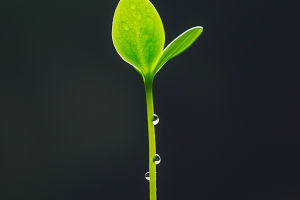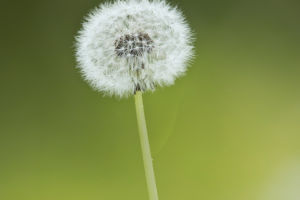Tulips, one of the most iconic flowers of spring, are loved for their vibrant petals and graceful appearance.
Their cultivation is relatively simple, but to grow healthy and beautiful tulips in your home or garden, you still need to master some basic knowledge and techniques.
This article will provide a comprehensive guide to tulip cultivation, covering aspects such as bulb selection, soil requirements, light needs, and fertilization management.
1. Choosing Quality Bulbs
Tulips are mainly propagated through bulbs, so selecting high-quality bulbs is the first step to successful cultivation.
Good bulbs should be firm, free of blemishes or damage, and have a rich, full color with a smooth surface. When purchasing, it’s recommended to choose bulbs that are relatively hard, as these have more vitality and are more likely to sprout and grow well.
2. Suitable Soil
Tulips prefer well-draining, loose, and fertile soil. The ideal pH range for the soil is between 6 and 7, which promotes healthy growth. If the soil is too acidic or alkaline, you can adjust the pH by adding lime or sulfur.
Additionally, tulips do not tolerate waterlogged soil, so avoid planting them in areas prone to water accumulation, or improve drainage by adding sand, organic compost, or leaf mold.
3. Ideal Planting Time
Tulips are typically planted in the fall, with the recommended planting window being from September to November.
Planting in the fall allows the bulbs to rest through the cold winter, ensuring they will sprout and bloom when spring arrives. It's important to plant during cool weather, avoiding the hot summer months, as the bulbs need to acclimate to the soil.
4. Planting Depth and Spacing
The ideal planting depth for tulip bulbs is usually between 10 to 15 cm, depending on the type of soil and the size of the bulb.
In well-drained soil, a deeper planting depth can be used, whereas in heavier soil, a shallower depth may be more suitable. The spacing between tulips should be around 10 to 15 cm to allow enough room for growth, ensuring proper airflow and light exposure without overcrowding.
5. Light Requirements
Tulips are sun-loving plants and require ample sunlight to promote flowering. Therefore, the planting site should be in a location that receives plenty of sunlight, with at least 4 to 6 hours of direct sunlight per day. In colder regions, adequate sunlight helps tulips grow better and produce more vibrant blooms.
6. Fertilization Management
Tulips have relatively high fertilizer requirements, but they should not be over-fertilized. In spring, when growth begins, a balanced fertilizer containing nitrogen, phosphorus, and potassium can be applied to encourage quick growth.
It is generally recommended to fertilize 2 to 3 times a year: the first application should be at the start of spring growth, the second just before flowering to help trigger the bloom, and the final application after flowering to help the plants recover and store nutrients for next year.
7. Harvesting and Storing Bulbs
After tulips bloom, the bulbs continue to grow and accumulate nutrients. Once the flowering period ends and the leaves start to yellow, the bulbs can be dug up and stored.
It is important to handle the bulbs carefully to avoid damaging their outer skin and ensure they are completely dry. Bulbs should be stored in a cool, dry place away from direct sunlight to prepare them for the next planting season.
While tulip cultivation may seem straightforward, growing high-quality flowers requires careful attention to factors such as bulb selection, soil, light, and water management. With proper care, anyone can enjoy the beauty and fragrance of these spring messengers in their garden or on their balcony.


